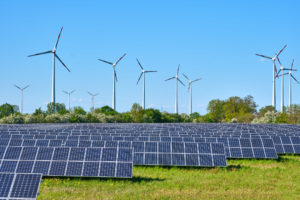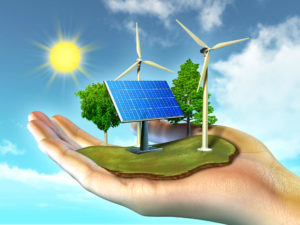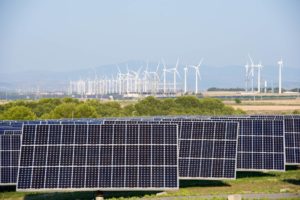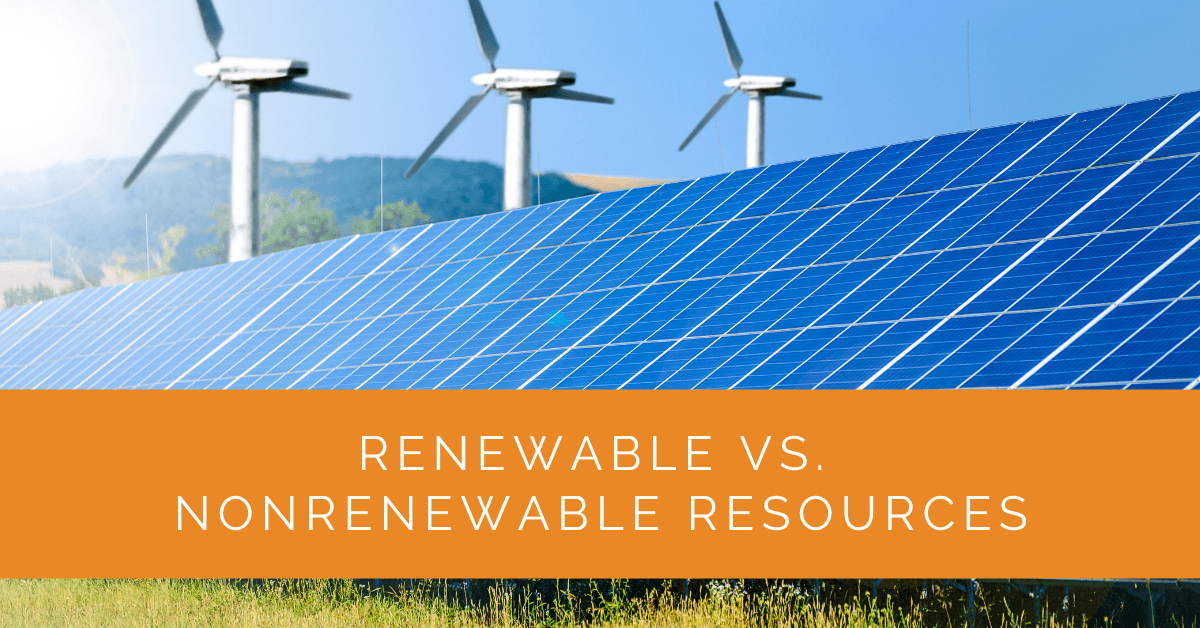In today’s world, energy sources and their environmental impact have gained significant attention. Using renewable and nonrenewable resources plays a crucial role in shaping our energy landscape. This article will delve into renewable and nonrenewable resources, explore their characteristics, and discuss the implications of choosing one over the other.
Contents
- 1 Key Takeaways
- 2 What Are Renewable Resources?
- 3 What Are Nonrenewable Resources?
- 4 The Difference between Renewable and Nonrenewable Resources
- 5 Advantages and Disadvantages of Renewable Resources
- 6 Advantages and Disadvantages of Nonrenewable Resources
- 7 The Importance of Conserving Nonrenewable Resources
- 8 Expert Insights From Our Solar Panel Installers About Renewable vs. Nonrenewable Resources
- 9 Experience Solar Excellence with Us!
- 10 Conclusion
Key Takeaways
- Renewable resources, such as solar and wind energy, offer clean, sustainable, and virtually inexhaustible power sources.
- Nonrenewable resources, like fossil fuels, have high energy density but come with environmental consequences, finite supply, and geopolitical dependencies.
- Conserving nonrenewable resources and transitioning to renewable alternatives are crucial for future generations, environmental preservation, and sustainable energy development.
What Are Renewable Resources?
Renewable resources are natural energy sources that can replenish or regenerate within a relatively short period. These resources are considered sustainable as they can be naturally replenished. Common examples of renewable resources include solar, wind, geothermal, hydroelectric, and biomass. Let’s take a closer look at some of these examples:
Solar Energy
Solar energy harnesses the power of sunlight through photovoltaic cells or solar thermal systems. The sun provides an abundant and continuous supply of energy that can be converted into electricity or used for heating purposes.
Wind Energy
Wind energy is derived from the kinetic energy of the wind. Wind turbines capture this energy and convert it into electricity. It is a clean and plentiful source of power that has gained widespread use worldwide.
Geothermal Energy
Geothermal energy utilizes heat from within the Earth to generate electricity or for direct use in heating systems. It taps into the Earth’s natural heat and is considered a reliable and renewable energy source.
Hydroelectric Power
Hydroelectric power is generated by harnessing the energy of flowing or falling water. It is one of the most widely used renewable energy sources, with dams and turbines converting the energy of water into electricity.
Renewable resources offer several advantages. They produce clean energy, meaning their use has minimal impact on the environment, particularly regarding greenhouse gas emissions. Additionally, these resources are virtually inexhaustible, ensuring a long-term and sustainable energy supply.

What Are Nonrenewable Resources?
In contrast to renewable resources, nonrenewable resources are finite and cannot be replenished within a human lifespan. These resources are formed over millions of years through natural processes. Common examples of nonrenewable resources include fossil fuels (coal, oil, natural gas) and nuclear energy.
Fossil Fuels
Fossil fuels, such as coal, oil, and natural gas, are derived from the remains of ancient plants and organisms. These resources have been formed over millions of years and are primarily used as energy sources. However, their extraction and burning process pose environmental challenges.
Nuclear Energy
Nuclear energy is produced through nuclear reactions, particularly the splitting of atoms (nuclear fission). While it is not directly derived from natural resources, it is considered nonrenewable due to the limited availability of fissile materials like uranium and plutonium.
Nonrenewable resources have been the primary energy sources for centuries due to their high energy density and availability. However, their extraction and combustion contribute to greenhouse gas emissions and other environmental concerns. Additionally, nonrenewable resources are finite and will eventually run out, making transitioning to alternative energy sources necessary.
The Difference between Renewable and Nonrenewable Resources
Renewable and nonrenewable resources differ in several key aspects, including their replenishment ability, environmental impact, sustainability, and availability.
Replenishment Ability
Renewable resources can replenish themselves naturally over time. For example, sunlight, wind, and geothermal heat are continuously available and will not deplete with their use. In contrast, nonrenewable resources, such as fossil fuels, are finite and take millions of years to form. Once these resources are extracted and consumed, they cannot be replenished within a human lifespan.
Environmental Impact
Renewable resources generally have a lower environmental impact compared to nonrenewable resources. Using renewable energy sources produces minimal greenhouse gas emissions, creating a cleaner and healthier environment. In contrast, burning fossil fuels releases significant amounts of carbon dioxide and other pollutants, leading to air pollution and climate change.
Sustainability
Renewable resources promote sustainability by ensuring a continuous and reliable energy supply. As they can be naturally replenished, they offer long-term solutions to meet our energy needs without depleting finite resources. On the other hand, nonrenewable resources are limited in quantity and will eventually run out, necessitating the transition to alternative energy sources.
Availability
Renewable resources are widespread and accessible in various regions, making them a viable option for energy production globally. The sun’s energy, wind patterns, and geothermal heat exist in various parts of the world, providing ample opportunities for harnessing renewable energy. In contrast, nonrenewable resources may be limited to specific geographic locations, leading to challenges in distribution and energy dependence on those regions.
Understanding the differences between renewable and nonrenewable resources is crucial in shaping our energy future. The transition towards renewable energy sources has gained momentum due to their environmental benefits, long-term sustainability, and the need to reduce reliance on finite resources.

Advantages and Disadvantages of Renewable Resources
Renewable resources offer numerous advantages, but they also come with certain limitations. Let’s explore the advantages and disadvantages of using renewable resources for energy production:
Advantages of Renewable Resources
Clean Energy
Renewable resources produce clean energy that has a minimal environmental impact. They generate electricity without emitting greenhouse gases or other harmful pollutants, creating a cleaner and healthier environment.
Sustainability
Renewable resources are virtually inexhaustible and can be naturally replenished over time. Unlike nonrenewable resources, which take millions of years to form, renewable resources offer a sustainable and long-term solution to meet our energy needs.
Diversification of Energy Sources
The use of renewable resources allows for diversification in our energy sources. Reducing reliance on fossil fuels can mitigate the risks associated with price fluctuations, supply disruptions, and geopolitical tensions.
Disadvantages of Renewable Resources
Intermittency
One of the primary challenges with renewable resources is their intermittent nature. For example, solar energy is unavailable at night or on cloudy days, and wind energy depends on wind patterns. The intermittency of renewable resources requires additional energy storage or backup systems to ensure a consistent power supply.
High Initial Costs
The initial costs of installing renewable energy systems can be relatively high compared to traditional energy sources. However, with technological advancements and economies of scale, the cost of renewable energy systems has steadily decreased, making them more accessible to a wider range of consumers.
Infrastructure and Technology Requirements
To harness renewable resources effectively, suitable infrastructure and technology are necessary. This includes solar panels, wind turbines, geothermal systems, and hydroelectric power plants. The development and implementation of this infrastructure require careful planning and investment.
Considering these advantages and disadvantages is essential when evaluating the suitability of renewable resources for various energy applications. While the benefits are significant, carefully considering the limitations is crucial for effective integration into our energy systems.

Advantages and Disadvantages of Nonrenewable Resources
Nonrenewable resources have been the primary energy sources for many years due to their high energy density and widespread availability. However, they come with their own set of advantages and disadvantages. Let’s explore them in more detail:
Advantages of Nonrenewable Resources
High Energy Density
Nonrenewable resources, particularly fossil fuels, have a high energy density. This means that a relatively small amount of these resources can produce significant energy. The high energy density of fossil fuels has contributed to their widespread use in transportation, electricity generation, and industrial processes.
Well-Established Infrastructure and Technology
Nonrenewable resources, especially fossil fuels, have well-established infrastructure and technology for extraction, processing, and utilization. The existing infrastructure and expertise in the industry have made these resources easily accessible and economically viable for energy production.
Disadvantages of Nonrenewable Resources
Environmental Impact
One of the significant drawbacks of nonrenewable resources is their environmental impact. The extraction, processing, and combustion of fossil fuels release significant amounts of carbon dioxide (CO2) and other greenhouse gases into the atmosphere, contributing to climate change and air pollution. The environmental consequences of nonrenewable resource use pose long-term risks to the planet.
Finite Supply and Resource Depletion
Nonrenewable resources are finite and will eventually run out. The extraction and use of these resources deplete their availability, making it necessary to find alternative energy sources. The finite supply of nonrenewable resources, such as fossil fuels, has led to concerns about energy security and the need for transitioning to sustainable alternatives.
Dependence on Geopolitically Sensitive Regions
Nonrenewable resources are often concentrated in specific regions around the world. This concentration leads to geopolitical tensions and dependence on these regions for energy supply. Conflicts and disruptions in these regions can significantly impact global energy markets and stability.
While nonrenewable resources have played a crucial role in meeting our energy needs, their limitations and environmental consequences drive the urgent need to transition to renewable energy sources. As we face the challenges of climate change and the depletion of finite resources, it is vital to prioritize developing and adopting clean and sustainable energy alternatives.

The Importance of Conserving Nonrenewable Resources
Conserving nonrenewable resources is of utmost importance for several reasons:
Future Generations
Nonrenewable resources, such as fossil fuels, take millions of years to form. Once these resources are depleted, they will no longer be available for future generations. By conserving nonrenewable resources, we can ensure that future generations can access the resources they need to meet their energy demands.
Environmental Preservation
Conserving nonrenewable resources helps mitigate the environmental impact of their extraction and use. By reducing our reliance on nonrenewable resources, we can minimize the release of greenhouse gases and pollutants, protecting the environment and mitigating climate change.
Transition to Sustainable Alternatives
Conserving nonrenewable resources is closely tied to the transition to sustainable energy alternatives. By conserving these resources, we can reduce our dependence on finite and environmentally harmful sources and accelerate the adoption of renewable energy sources.
Energy Efficiency
Conserving nonrenewable resources also involves promoting energy efficiency. Using energy more efficiently can reduce overall energy consumption and the need for nonrenewable resource extraction. Energy-efficient practices in transportation, buildings, and industrial processes can contribute significantly to conserving nonrenewable resources.
Conserving nonrenewable resources requires a collective effort from individuals, businesses, and governments. It involves adopting sustainable practices, embracing renewable energy sources, and promoting energy efficiency in all our lives. By conserving nonrenewable resources, we can create a more sustainable and resilient energy future for generations to come.
Expert Insights From Our Solar Panel Installers About Renewable vs. Nonrenewable Resources
Switching to renewable resources like solar energy not only reduces our carbon footprint but also ensures a sustainable and cost-effective energy supply for the future.
Senior Solar Installer
Nonrenewable resources have been our primary energy source for decades, but their environmental impact and finite nature make the transition to renewables crucial for long-term sustainability.
Lead Solar Engineer
Installing solar panels is a step towards energy independence. Unlike fossil fuels, solar energy is abundant and inexhaustible, making it a smart choice for residential and commercial applications.
Architectural Solar Specialist
Experience Solar Excellence with Us!
Trust in Solar Panels Network USA, where our seasoned experts deliver top-quality solar solutions for homes and businesses nationwide. With a legacy of countless successful installations and a commitment to sustainable energy, we’re your reliable partner in the solar journey. Ready for a brighter, eco-friendly future? Call us now at (855) 427-0058 and harness the power of the sun!
Conclusion
Choosing between renewable and nonrenewable resources has far-reaching implications for our energy systems and the environment. Renewable resources offer a sustainable and clean energy future, while nonrenewable resources have been the backbone of our energy systems for decades. However, nonrenewable resources’ limitations and environmental consequences necessitate a transition to renewable alternatives.
As we face the challenges of climate change and the depletion of finite resources, embracing renewable energy sources, conserving nonrenewable resources, and promoting energy efficiency is crucial. The collective efforts of individuals, businesses, and governments will shape the future of our energy landscape, ensuring a sustainable and environmentally friendly world for generations to come. By understanding the key differences between renewable and nonrenewable resources, we can make informed decisions and contribute to a cleaner and more sustainable future.
About the Author
Solar Panels Network USA stands at the forefront of solar energy solutions, driven by a team of seasoned solar engineers and energy consultants. With over decades of experience in delivering high-quality solar installations and maintenance, we are committed to promoting sustainable energy through customer-centric, tailored solutions. Our articles reflect this commitment, crafted collaboratively by experts to provide accurate, up-to-date insights into solar technology, ensuring our readers are well-informed and empowered in their solar energy decisions.

